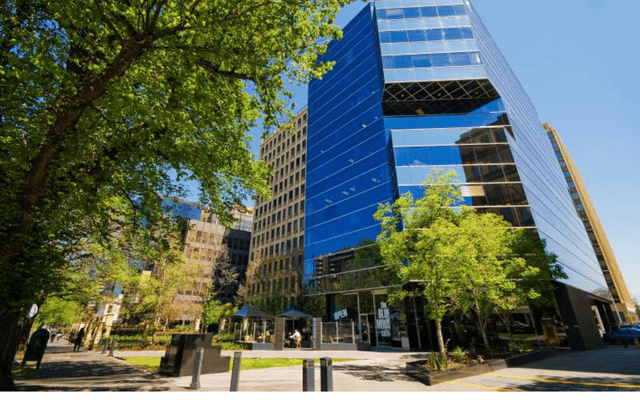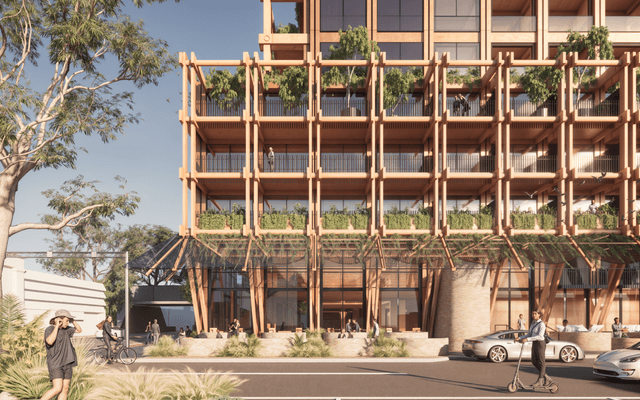This article is from the Australian Property Journal archive
MIRVAC is believed to have secured a one hectare site in Melbourne’s Brunswick for nearly $40 million, 18 months after walking away from an agreement to buy the land as part of a larger property.
According to Nine Media, the major developer plans to use the amalgamated site at 395 to 403 Albert St for its second Melbourne build to rent project, in partnership with Milieu Property which bought the 2,291 sqm 395 Albert St site last year.
The combined land also includes 7,018 sqm of industrial land at 397 Albert St and a residential property of 467 sqm at number 403, and could make way for a project of more than 400 dwellings with an end value of over $200 million.
Mivac’s first build-to-rent project in Melbourne will be on the high-profile Munro site opposite the Queen Victoria Market after the major developer struck a $333.5 million deal with PDG Corporation.
Developer PDG has plans for dual towers on the 6,500 sqm Therry Street site, of 38 and ten storeys, comprising 380 apartments and a hotel, which will need to be tweaked to accommodate 490 build-to-rent units.
Mirvac’s first build-to-rent asset in Australia, the Pavilions project in Sydney Olympic Park, is due for completion in September 2020.
Last year, Australian Property Journal reported that Mirvac retreated from its agreement to buy 1.7 hectares of land – encompassing 395 to 429 Albert St – despite successfully lobbying the Planning Minister on behalf of landowners for rezoning of the industrial properties to mixed use.
The Albert Street Urban Renewal Precinct was confirmed in December, and planning documents show Amendment C172 was requested by the development giant across 12 properties from numbers 395 to 429, with the Planning Minister as the authority.
The tract of land, opposite Gilpin Park and adjacent to Clifton Park, would offer development potential of up to eight levels in height as Melbourne’s popular northern suburbs.
An explanatory report for the amendment says it would “facilitate positive social outcomes by making a significant contribution to housing supply by encouraging a mix of one, two and three-bedroom dwellings.
“The amendment will also make a positive contribution to the public domain by improving the public connections, safety and amenity of Clifton Park.”
Early in 2017, Mirvac appeared set to acquire 397-401 Albert Street for a reported figure of around $25 million, and the adjoining number 395 for more than $8 million, but the deal never eventuated.
Number 395 Albert St was subsequently relisted for sale, as was the 4,000 sqm warehouse and storage yard site at 429 Albert St with expectations believed to be above $18 million. A separate expressions of interest campaign through Savills for 429 Albert St has just concluded.
They were joined by on the market by three properties on the western boundary encompassing 1,184 sqm of land, each listed separately.
New Research from Allen and Urbis suggests build to rent housing may be the quickest solution to assist in the delivery of almost 1.6 million new homes across Australia over the next 10 years, but existing government policies are not conducive to the emerging viable asset class which has proven to be successful overseas. The total figure includes an additional 500,000 rental properties.
According to the latest Rental Affordability Index, all Newstart recipients who are renting are living in poverty. Renting households on incomes below $60,000 per annum have no affordable rentals in our cities, including all capitals and nearly every centre on the east coast.
Hobart remains the least affordable city to rent in Australia, while Adelaide has overtaken Sydney and jumped into second place.
A new Colliers report said that “despite the challenges ahead, there are a number of opportunities that exist for build-to-rent investment across Australia’s largest cities”.
“There are various markets around Australia in which a built-to-rent investment case could be created. It is imperative that developers conduct thorough research and demographic analysis to ensure they identify who their market is and what they value to ensure yields and returns are maximised.
“Moving forward, the success of the build-to-rent model will revolve around its ability to differentiate from the private rental sector through the level of service (management), security, design, amenity and tenure. The ability to adopt the mentality of ‘customers’ rather than ‘tenants’ will be imperative.”




